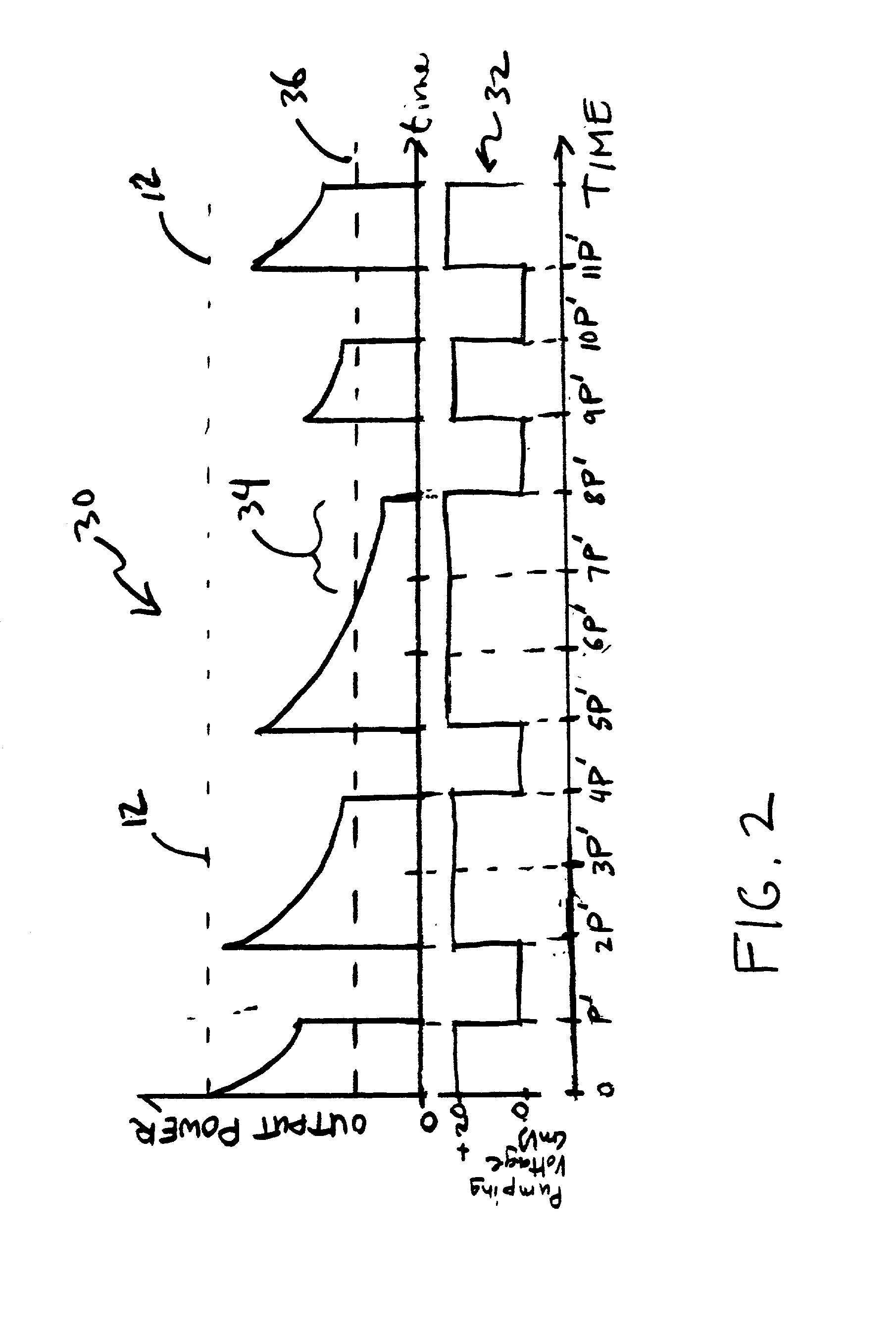Data transmission via direct modulation of a mid-IR laser
a laser and direct modulation technology, applied in the field of laser modulation and optical data transmission, can solve the problems of inconvenient installation of cables and fibers in urban areas, inability to transmit data in free space, and inability to meet the requirements of data transmission,
- Summary
- Abstract
- Description
- Claims
- Application Information
AI Technical Summary
Problems solved by technology
Method used
Image
Examples
Embodiment Construction
[0020] Quantum cascade (QC) lasers have properties that are advantageous for free-space optical transmitters. For example, QC lasers are mid-IR lasers with high output powers. Herein, mid-infrared (mid-IR) lasers lase at wavelengths in the range of about 3.5 microns to about 20 microns.
[0021] Various embodiments use QC lasers that lase at wavelengths in windows where atmospheric absorption is low. One low absorption window includes wavelengths in the range from about 8 microns to about 13 microns. Another low absorption window includes wavelengths in the range from about 3.5 microns to about 5 microns where these wavelengths are not in the CO.sub.2 absorption peak located at about 4.65 microns.
[0022] QC lasers can also be directly modulated at high frequencies. Herein, direct modulation refers to modulation that changes pumping of a laser between a value for which the laser has a high output power level and a value for which the laser has a low output power level. At these high and ...
PUM
 Login to View More
Login to View More Abstract
Description
Claims
Application Information
 Login to View More
Login to View More - Generate Ideas
- Intellectual Property
- Life Sciences
- Materials
- Tech Scout
- Unparalleled Data Quality
- Higher Quality Content
- 60% Fewer Hallucinations
Browse by: Latest US Patents, China's latest patents, Technical Efficacy Thesaurus, Application Domain, Technology Topic, Popular Technical Reports.
© 2025 PatSnap. All rights reserved.Legal|Privacy policy|Modern Slavery Act Transparency Statement|Sitemap|About US| Contact US: help@patsnap.com



